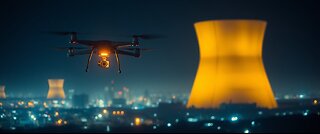Premium Only Content

Kamala Harris’ Price Control Plan: The First Step Toward American Communism?
At a rally in North Carolina on Friday, Vice President Kamala Harris, the Democratic presidential nominee, unveiled her proposed economic plan that includes ‘price controls,’ a strategy often associated with communist regimes. Harris blames “evil capitalism” and corporations for rampant inflation, despite evidence that reckless government spending under her and President Biden is a primary driver of rising costs, especially for groceries. Even Washington Post columnist Catherine Rampell criticized Harris’ plan to implement price controls to combat “price gouging” on groceries, calling it a disastrous policy.
“It’s hard to exaggerate how bad this policy is,” Rampell wrote in an op-ed titled, “When your opponent calls you ‘communist,’ maybe don’t propose price controls?”
On Saturday morning, Elon Musk reposted a detailed analysis from a food industry insider, Robert Sterling, who outlined the potential consequences of Harris’ price control plan. Musk added, “Accurate conclusion (read the whole post).”
Sterling, who has experience in mergers and acquisitions in the food industry, detailed the following outcomes:
- The government would announce that grocery retailers can’t raise prices.
- Grocery stores, operating on slim 1-2% net margins, would struggle if suppliers raise costs. Consequently, the government would also prohibit food producers (like Kraft Heinz, ConAgra, Tyson, Hormel, etc.) from increasing prices.
- Grocery stores in lower-income areas, which rely heavily on lower-margin prepackaged foods, would be unable to cover overhead costs and start shutting down, worsening food deserts in rural and low-income urban areas.
- As food producers’ margins erode, they’d have less cash flow for overhead, facility maintenance, and reinvestment, leading to reduced production capacity.
- Grocery chains would repurpose stores to sell more non-price-controlled items, like supplements, kitchenware, and apparel, and less food, making them resemble Walmart.
- Food producers would stop making lower-margin products, leading to grocery chains competing for inventory not by offering better prices but through payment terms.
- Small grocery chains would shut down or be sold to larger ones like Kroger, while smaller food producers, with inherently higher costs, would also go out of business.
- As supply chains break down, lines would form outside grocery stores, cities would assign police to patrol store parking lots, and food producers would need armed escorts for delivery trucks.
- The federal government would issue block grants for states to purchase and operate shuttered grocery stores, while the USDA would seize closed-down production facilities.
- The government would then fix prices for all key food costs—corn, wheat, cattle, energy, etc.—to stop “profiteers” from gouging the now-government-run food industry.
- Predictably, the government would struggle to manage the highly complex food supply chain, leading to its collapse, mass starvation, and the eventual downfall of America.
Sterling also noted that small rural communities would be particularly hard hit. He lamented driving through Midwestern towns where Dollar General stores have replaced once-thriving local grocery stores that operated for over a century.
Cameron Winklevoss echoed these sentiments, writing on X, “Inflation is experienced at the grocery store, but always manufactured by the government. The politicians who create it by printing money villainize and blame companies that have nothing to do with it — to distract from their reckless spending.”
It’s clear that many Americans are beginning to see Vice President Harris as pushing a radical, far-left economic agenda reminiscent of communism.
-
 1:56
1:56
Conspiracy Chronicle
5 days agoMysterious Drones Over New Jersey: Are They Hunting for Nuclear Radiation?
932 -
 10:02
10:02
MichaelBisping
22 hours agoBISPING: "Was FURY ROBBED?!" | Oleksandr Usyk vs Tyson Fury 2 INSTANT REACTION
76.8K13 -
 8:08
8:08
Guns & Gadgets 2nd Amendment News
2 days ago16 States Join Forces To Sue Firearm Manufacturers Out of Business - 1st Target = GLOCK
104K86 -
 10:17
10:17
Dermatologist Dr. Dustin Portela
2 days ago $18.00 earnedOlay Cleansing Melts: Dermatologist's Honest Review
143K14 -
 1:02:20
1:02:20
Trumpet Daily
2 days ago $44.35 earnedObama’s Fake World Comes Crashing Down - Trumpet Daily | Dec. 20, 2024
99.9K63 -
 6:29
6:29
BIG NEM
1 day agoCultivating God Mode: Ancient Taoist NoFap Practices
73.5K20 -
 30:53
30:53
Uncommon Sense In Current Times
2 days ago $11.24 earned"Pardon or Peril? How Biden’s Clemency Actions Could Backfire"
86.6K7 -
 40:01
40:01
CarlCrusher
1 day agoSkinwalker Encounters in the Haunted Canyons of Magic Mesa - ep 4
79.7K10 -
 59:44
59:44
PMG
2 days ago $10.65 earned"BETRAYAL - Johnson's New Spending Bill EXPANDS COVID Plandemic Powers"
80.3K49 -
 6:48:50
6:48:50
Akademiks
1 day agoKendrick Lamar and SZA disses Drake and BIG AK? HOLD UP! Diddy, Durk, JayZ update. Travis Hunter RUN
198K35